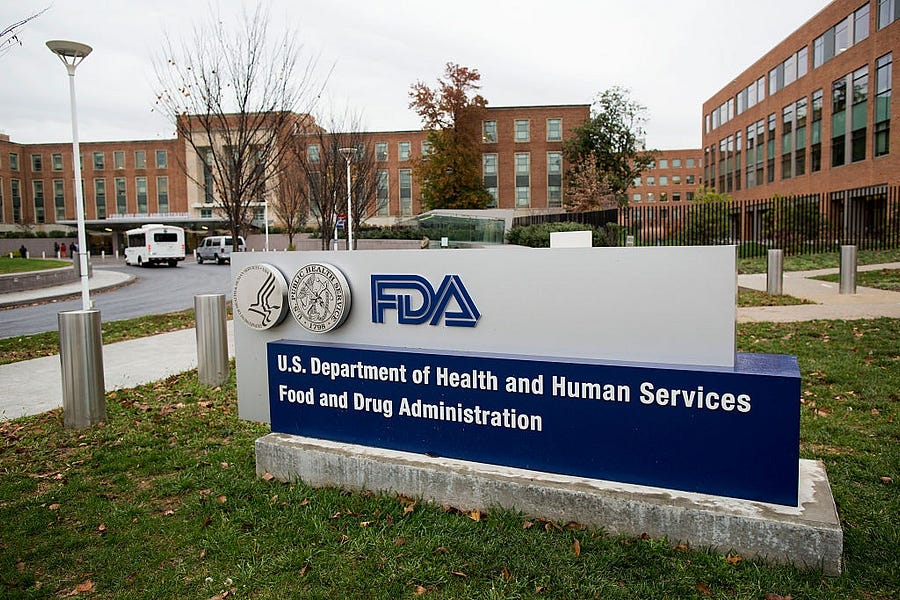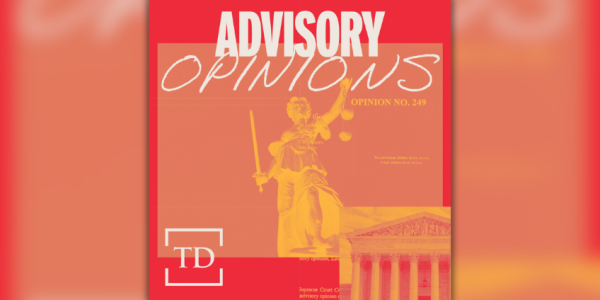Happy Thursday! The Dispatch’s softball team is getting up off the mat and taking on the U.S. Agency for International Development tonight. They better hope they’ve developed some defense—we’re bringing out the big bats.
Quick Hits: Today’s Top Stories
-
The Senate voted 67-32 on Wednesday to open debate on a bipartisan infrastructure package that would allocate approximately $550 billion in new federal spending toward roads, bridges, waterways, airports, internet, and more. The full text of the bill is still being written, and final passage is not yet guaranteed.
-
United Kingdom officials announced yesterday that fully vaccinated travelers from the United States and European Union will no longer need to quarantine upon arrival to the country, starting August 2. The White House has not reciprocated, keeping in place its ban on most British people entering the United States.
-
In an effort to “promote accountability for entities and individuals that have perpetuated the suffering of the Syrian people,” the State Department on Wednesday announced the imposition of sanctions on a handful of Syrian prisons, Assad regime officials, and militia groups/leaders. They are the first new sanctions the Biden administration has imposed on the country.
-
A group of bipartisan House lawmakers announced Wednesday that they were forming a new caucus aimed at holding the Chinese government accountable for the genocide it is allegedly perpetrating against the Uyghur people.
The Mystifying Wait for Full Vaccine Approval
We wrote to you yesterday about the growing prevalence of COVID vaccine mandates, a discussion that’s gained steam as the Delta variant rips through the population. Some employers are beginning to require certain workers to get shots, but many institutions are waiting on the Food and Drug Administration to grant the vaccines full approval—rather than the current emergency use authorizations—before doing so. The longer the pandemic lingers, the more public health officials wonder: What the heck is taking so long?
“I can’t explain it,” Dr. Monica Gandhi, an infectious disease expert at the University of California San Francisco, told The Dispatch. “It doesn’t even seem like there’s a story that can be written about the reason for the delay, because I don’t think there are any reasons for it.”
To get full authorization from the FDA, Gandhi explained, companies are typically required to show clinical trial data—usually published in a peer reviewed journal—and submit six months of data showing the ongoing effects of their vaccines. When Pfizer and Moderna received emergency approval from the FDA in December 2020—the first time new vaccines had received such an authorization—the second criterion had not yet been met.
“When we went to emergency approval of these vaccines, they had only released their results in November and had only two weeks’ worth of data for some of the participants in their Phase 3 trials,” Gandhi said. “But now we’re past the six months—quite a bit past the six months—for some of those participants, because they started enrolling in July [2020].”
Both Pfizer and Moderna requested full authorization from the FDA earlier this summer. And in a recent essay for the New York Times, Eric Topol, a professor of molecular medicine at The Scripps Research Institute and a former FDA advisor, noted that 180 million doses of the Pfizer vaccine and 133 million of Moderna’s have been administered in the United States.
“In the history of medicine, few if any biologics (vaccines, antibodies, molecules) have had their safety and efficacy scrutinized to this degree,” he wrote. “It’s frankly unfathomable that mRNA vaccines have been proved safe and effective in hundreds of millions of people and yet still have a scarlet ‘E.’”
For its part, the FDA has claimed granting full authorization is contingent upon a review process that is not yet completed.
“We want to assure the public that the review of applications for full approval of Covid-19 vaccines is one of the highest priorities at the Food and Drug Administration,” Peter Marks, director of the FDA’s Center for Biologics Evaluation and Research, wrote on July 9. “However, an extensive additional amount of manufacturing and clinical information has been collected since the emergency use authorizations and must be reviewed and evaluated by the agency as part of any applications submitted.”
It is worth noting that the FDA’s own FAQ page about available COVID-19 vaccines provides an unequivocal endorsement of their safety and efficacy.
“All three FDA-authorized vaccines prevent COVID-19 and serious health outcomes that COVID-19 can cause, including hospitalization and deaths,” the agency writes. “The FDA thoroughly evaluated and analyzed the safety and effectiveness data for all of the authorized COVID-19 vaccines. The FDA determined that the available data for each vaccine provides clear evidence that the known and potential benefits outweigh the known and potential risks of each vaccine.”
Given this endorsement, health experts question why the FDA is taking so long with its approval process. Dr. William Schaffner, a Vanderbilt University Medical Center infectious disease expert, told The Dispatch earlier this week he believes full approval could provide a major boost to vaccine uptake. “We would be instituting more mandates, which would save people from those beds and serious infections,” he said.
“Do I think they ought to be faster with giving a license to these vaccines? Yeah, unless you tell me there’s a real problem of some sort,” he said. “I’ve never thought the FDA should be as complete of a black box as it is.”
Gandhi says there’s “zero chance” the FDA will ultimately reject the full authorization requests, given the amount of information available about the vaccines’ safety. “There’s been so much data. I can’t see what would come up [to prevent approval],” she said.
For vaccine makers, full approval from the FDA is an assurance that they will continue to be allowed to distribute their product. The FDA can withdraw an emergency authorization at any time, but it takes longer—often multiple years—for the agency to rescind an official approval. In March 2020, for example, the FDA granted EUA status to the drug hydroxychloroquine, but they revoked the authorization three months later after receiving reports it was causing heart problems.
Last week, Dr. Francis Collins, the director of the National Institutes of Health, told CNN that full approval of a COVID-19 vaccine could come in the “next couple months.” But for Schaffner, each additional day waiting for full authorization represents more lives lost.
“The sooner it comes, the better,” he said. “I would just tell my friends at the FDA, their not yet being able to do this is resulting in hospitalizations, and eventually some deaths.”
A June 2021 report from the Kaiser Foundation found that 30 percent of unvaccinated adults say they would be more likely to get a vaccine if it received full approval from the FDA. But the report also notes that FDA approval may serve only as a proxy for general safety concerns, since two-thirds of U.S. adults either mistakenly believe the COVID-19 vaccines already have full approval or are unsure whether they do.
Regardless, Dr. Gandhi argues that having a fully approved vaccine will provide a boost to vaccination rates across the country.
“There’s something very psychologically difficult about signing a consent form for a medication or a vaccine, which is what you have to do for an emergency authorization treatment—sign a 5-page consent form,” she explained. “And we can’t underestimate the extent to which that feels more experimental, signing a consent form versus just getting a vaccine from your doctor’s office. So, I think it will absolutely increase uptake.”
Delta Disrupts Back-to-School
It’s hard to believe, but the end of the summer is quickly approaching. For your Morning Dispatchers, that will mean welcome relief from the D.C. heat and humidity and a fond farewell to our intrepid interns. For more than 50 million kids across the United States, it will mean going back to school in an educational system that has been profoundly disrupted by the COVID-19 pandemic.
A report released Tuesday by the consulting firm McKinsey & Company underscores the negative effects of “unfinished learning” caused by the pandemic. By the end of the 2020-2021 school year, elementary school kids in grades one through six were “five months behind in mathematics and four months behind in reading” on average, with a disproportionate impact falling on poorer, majority-minority, and urban schools. These setbacks could be permanent, leading to depressed economic productivity and other ill effects years down the road.
Chris Marsicano, an education policy professor at Davidson College who helped develop the Return to Learn tracker at the American Enterprise Institute, told The Dispatch that despite years of research showing that in-person learning is better for students, the “transitions from online K-12 education to hybrid or in-person systems” that happened across the country this past spring still showed “negative trends … relative to previous years in terms of student outcomes, whether they be test scores or grades or what have you.”
Marsicano’s colleague Nat Malkus, an AEI scholar, said “the return to normal school operations will be the best way to get kids sort of back on track—not necessarily caught up, but back on track.”
Unfortunately, normal operations may be further off for many than many had hoped. Earlier this month, the American Academy of Pediatrics updated its COVID-19 guidance for schools, urging universal masking while also “strongly advocating” for in-person learning. This week, the CDC followed suit.
Dr. Paul Offit, director of the vaccine education program at Children’s Hospital of Philadelphia, told The Dispatch the new guidance was likely informed by the spread of the Delta variant, the coming of the fall and winter months that are more conducive to COVID-19 spread, and the lack of vaccination among children, especially those under 12 who are not yet eligible to be inoculated.
“The components of those three events put children at a special risk,” he said. “I mean, were I the father of a 10-year-old, I would like to think that when my child went back to school that there was a mask mandate. … I don’t think it’s fair to put the burden on the schools to figure out who’s vaccinated and who’s not. Just have everybody mask.”
The new recommendations will not be implemented evenly across the country, as several states have made mask mandates in public schools or universities illegal. Those same states often have lower vaccination rates and are thus more vulnerable to outbreaks.
“For better or worse, [in] places that could probably use that guidance … it’s more likely to fall on deaf ears,” Malkus said. “I also worry that it messes with incentives. The shortest way to get schools to normal operations is to vaccinate all of them. Obviously, we can’t do that for everybody, but we can vaccinate all high school students. If you tell those high school students, ‘you don’t have to wear a mask if you are vaccinated,’ you’ve made a pretty strong incentive—to the degree that you can manage it—for those kids to get vaccinated. And if you require universal masking, especially when that group probably doesn’t need to be masked, then you remove the incentive to push your population to a durable solution to school closures moving forward.”
In an effort to avoid the unique challenges faced by public schools over the last year and a half, many families opted to homeschool their kids or send them to private schools. That trend may continue into the near future as well. “I think there’s still relative uncertainty, and whenever there’s uncertainty in the system, parents will do what they can to provide stability for their children,” Marsicano said. “While I hope that public schools make parents comfortable, I think it’s going to be another year before we get back to the pre-pandemic normal.”
Lucy Lets Charlie Brown Kick the Football on Infrastructure
If you follow politics and Congress closely, you know that accomplishing anything ambitious related to infrastructure has been the source of jokes on Capitol Hill for several years. Many elected officials across the political spectrum have promised to fix roads and bridges, saying it is a topic where Republicans and Democrats hold common ground.
During the Trump years, Democrats repeatedly pointed to infrastructure as a potential area for collaboration with Republicans—only for the two parties to differ dramatically on how much money to spend and how to finance that new spending. Many of those disagreements remained coming into the Biden administration, but a group of bipartisan senators has sought a deal for several months to address traditional infrastructure items including airports, highways, and rail.
After weeks of negotiations with their Democratic colleagues and the White House—and several false starts—a handful of Republicans led by Sen. Rob Portman of Ohio announced outside of Minority Leader Mitch McConnell’s office that an agreement had finally been reached.
Republicans weren’t the only ones taking a victory lap. “This deal signals to the world that our democracy can function, deliver, and do big things,” President Biden said in a statement. “As we did with the transcontinental railroad and the interstate highway, we will once again transform America and propel us into the future.”
Final text of the bill is not yet available, but that didn’t stop the Senate from voting 67-32 to advance it to the next stage of debate. Sixty votes were needed to overcome a filibuster, and once Minority Leader Mitch McConnell came out in favor of the deal, that was easy. Seventeen Republicans voted with Democrats to invoke cloture (more on exactly what that means below).
The White House released a fact sheet about the bill highlighting some of the expenditures including $110 billion for “roads, bridges, and major projects,” $49 billion to “modernize transit,” $65 billion for high-speed internet access, and more. There are several proposed payment mechanisms in the bill to help cover the costs of the new spending, most significantly the repurposing of more than $200 billion of COVID relief spending.
The vote that occurred last night is what’s called a “cloture” vote, which simply moves a bill along in the Senate process. Just because a senator voted for cloture does not mean he or she will vote to pass the bill when it comes up for final consideration—just that he or she was ready to bring it to the floor for debate and consideration of amendments.
The future of the bill is still uncertain in the Senate, let alone in the House of Representatives. While many senators were telling reporters in the halls of the Capitol that they are optimistic about its future, others were saying they had many unanswered questions about the infrastructure package.
Worth Your Time
-
If you enjoy good faith debate and discussion between two people who legitimately disagree, you’ll love this podcast featuring Ross Douthat and Ezra Klein. In it, the pair discuss how serious current threats to the democratic process actually are, how we should think about teaching American history, and why certain populations harbor such distrust for the medical establishment.
-
Vladimir Putin’s “regime is growing stronger, despite social discontent over the economy and Western sanctions for its alleged transgressions,” writes Ann Simmons in the Wall Street Journal. The West has exerted some pressure, but Alexei Navalny—the Russian opposition leader who survived an alleged assassination attempt—remains in jail, a sign of the invincibility Putin currently feels. “He doesn’t appear to feel threatened by the opposition or pressure from the U.S. and cares little about appeasing the public,” Simmons notes. “Authorities instead appear willing to use a range of tools to quash any space for organizing street protests or investigating the financial affairs of Mr. Putin and his inner circle.”
Presented Without Comment
Also Presented Without Comment
Toeing the Company Line
-
The Wednesday G-File (🔒) is back, and Jonah is angry—at those minimizing the events of January 6, at the CDC’s mask guidance about-face, at the framing of vaccine hesitancy, at anti-vaxxers, at House GOP leadership. “Whether it’s masks or vaccines, people can’t see past their partisan blinders,” he writes. “It’s all so incandescently stupid.”
-
On this week’s Dispatch Podcast, the gang breaks down the start of the January 6 select committee—both the substance and the politics—before turning to the CDC’s new masking guidance and Simone Biles’ decision to withdraw from competition at the Olympics.
-
Scott Lincicome’s latest Capitolism (🔒) explores the state of economic inequality, why it drives so much of the policy debate in Washington, and how three variables—omitted income, pre-tax/transfer income, and demographics—distort some of the statistics you might have seen. “American income inequality basically disappears when you consider government policies and the actual financial resources (post-tax/transfer) available to the poor and middle class, instead of just the top line of their paychecks,” he writes.
Let Us Know
Have you had conversations with vaccine-hesitant friends or relatives? What do they tell you about their reluctance? What’s the best way to convince them to give it, ahem, a shot?
Reporting by Declan Garvey (@declanpgarvey), Andrew Egger (@EggerDC), Charlotte Lawson (@charlotteUVA), Ryan Brown (@RyanP_Brown), Harvest Prude (@HarvestPrude), Tripp Grebe (@tripper_grebe), Emma Rogers (@emw_96), Price St. Clair (@PriceStClair1), Jonathan Chew (@JonathanChew19), and Steve Hayes (@stephenfhayes).







Please note that we at The Dispatch hold ourselves, our work, and our commenters to a higher standard than other places on the internet. We welcome comments that foster genuine debate or discussion—including comments critical of us or our work—but responses that include ad hominem attacks on fellow Dispatch members or are intended to stoke fear and anger may be moderated.
You are currently using a limited time guest pass and do not have access to commenting. Consider subscribing to join the conversation.
With your membership, you only have the ability to comment on The Morning Dispatch articles. Consider upgrading to join the conversation everywhere.